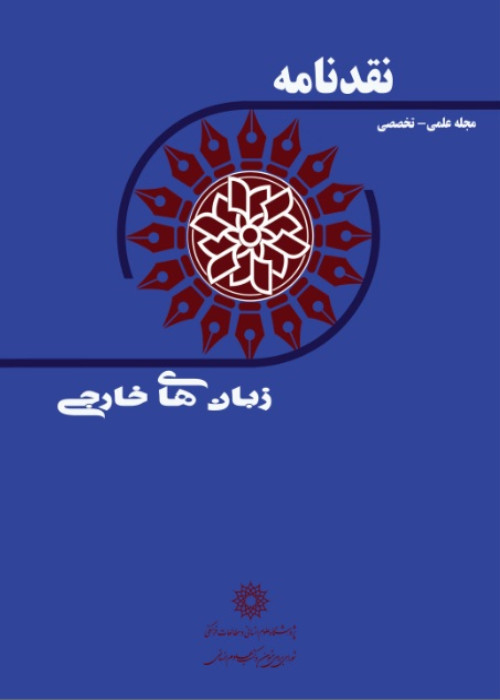فهرست مطالب
نقدنامه زبان های خارجی
سال دوم شماره 2 (پیاپی 4، Sep 2019)
- تاریخ انتشار: 1398/10/04
- تعداد عناوین: 4
-
Pages 5-18
Feminism is a topic of extreme relevance and importance at the world level. Women make their weight felt in different societies and try as never before to achieve recognition of their person and their work, both inside and outside the home. As literature is an instrument that reflects the life of the human being, whether real or idealized, and of which the writer uses to express in his works feelings, ideas and events that he wishes to transmit to the reader, the woman has always been present. He has been and is an essential protagonist with different nuances. In the present study, a comparison will be made between the feminine roles and their assessment in two masterpieces of world literature: The Shahnameh by Ferdowsi, the Persian epic par excellence, and La Celestina, awarded to Fernando de Rojas, a work cataloged as the second in importance in Spanish literature, first tragicomedy and prelude to the European Renaissance.
Keywords: Feminism, Literature, Assessement, Audacy, Shahnameh, La Celestina, Christianism, Zoroastrism, Renessance -
Pages 19-32
The film relations between Iran and Spain suffer a great asymmetry, which makes it a difficult case study. Whereas in Spain there have been distributed hitherto 28 Iranian feature films for exhibition, there is no official information about the Spanish films that have been shown in Iranian cinemas. However, since the emergence of the Iranian film in international film festivals during the ’90s, there arose some personal and professional relations between some filmmakers of both countries. This article explores the paradigmatic case of the presence of Kiarostami in Spain, in addition to the video correspondences that he and Victor Erice kept between 2005 and 2008.
Keywords: Iranian Cinema, Spanish Cinema, Film Festivals, Abbas Kiarostami, Victor Erice -
Pages 33-43
“Tear this heart out” (1986) and “The death of Artemio Cruz” (1962). The narrative of these two works have as a background the social events that happened during the Mexican Revolution in 1910, which lasted many years and that in fact, was used as the stage and theme of many famous Mexican writers in their narratives. The two writers denounce robbery, cheatings, lies, back stabbings, corruption, hypocrisy and more. Also, both writers portrayed their main characters to the readers, one of a man and the other of a woman, as people anchored in the period of the Mexican Revolution. In other words, both are shown to be the product of that period of time. The creation of time shaken by internal fights in a country in which, each generation had to eliminate or get rid of the old owners and to substitute them for new ones as ambitious and ruthless as the previous ones. Never the less, the subject to discuss in this paper is the role that play the two women, the one in “Tear this heart out”, that is in a position of liberating the oppressed woman that achieves control of her live and destiny and of the woman of “The death of Artemio Cruz”, that complies with the symbolic function that is reserved for her as the successor of a social and cultural baroque mandate. In other words, both are women that in different ways, given their circumstances, fight over the hegemony of their husbands.
Keywords: Mexican Revolution, Shaken, Liberating Position, Oppressed Woman, Baroque, Hegemony -
Pages 45-58
The female experience of writing brings with it one of the richest passages for today's literary criticism: that of female poetry, which is poetry without more, poetry without which literary history cannot be understood. Feminine freedom –notion and matrix of the thought of experience– opens the critical horizon allowing other knowledge and experiences to enter it to read the history of literature. History that has changed in the light of feminism showing how the experience of language and writing also teaches the cut of the feminine difference. Difference persecuted and almost neutralized by culture, which, when freely attended to, puts into orbit another relationship with reality. Feminine freedom, a notion born in the light of the Italian thought of sexual difference, allows a free listening and reading of the experience that some authors have put into play, among them, the Iranian poet Forugh Farrojzad, whose work is key to understanding the contemporary Persian poetry.
Keywords: Women, Poetry, Female Freedom, Sexual Difference


